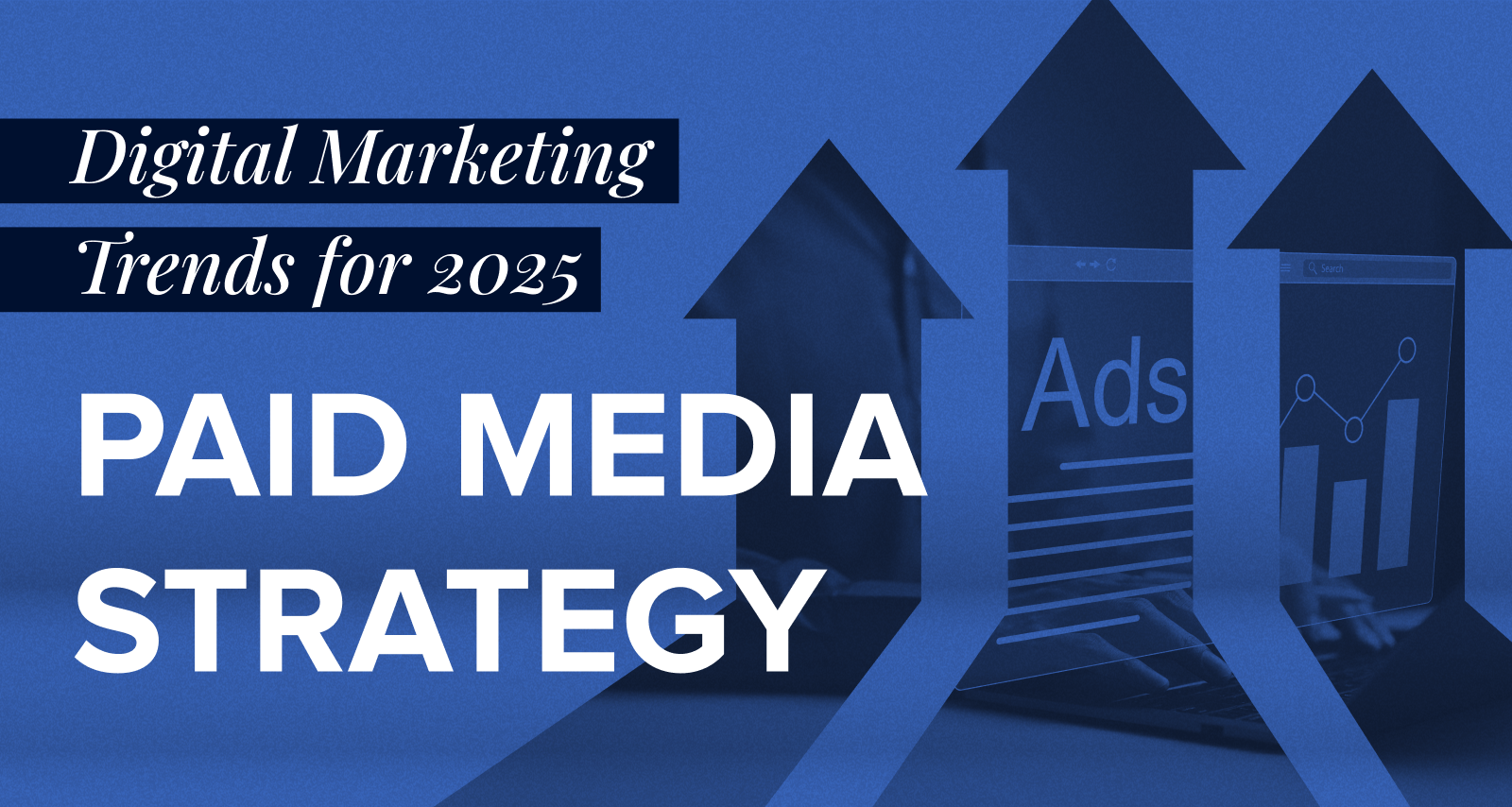Digital Marketing Trends for 2025: Paid Media Strategy
Published by Spinutech on November 21, 2024

2025 is a new year, but the challenge for marketers remains the same: Every dollar needs to show measurable results. To do that, you need to stay ahead of the curve and adapt your strategy. Success will be determined by how well you adapt to new technology, shifting audience expectations, and rising performance demands.
Our experts at Spinutech have spent the past year developing strategies and driving results for our clients — and gathering insights along the way. We don’t need tea leaves to predict what is on the horizon in 2025. The road ahead is paved by performance data and industry trends.
Our Digital Marketing Trends for 2025 series will be your guide to navigating the sea of changes taking place across all digital marketing channels in 2025.
The focus of this installment: Paid Media.
Paid Media Strategy Trends for 2025
Rising costs, evolving platforms, and game-changing technologies are reshaping the way paid media advertisers connect with their audiences and drive conversions.
Here are five trends to know for 2025:
1. CPCs and Media Costs Continue to Rise
The Trend: The cost of paid media continues to rise as competition intensifies across platforms. Cost-per-click (CPC) increases are being driven by growing advertiser demand — which in some verticals is due to significant private equity infusions into corporate ad budgets — and shrinking audience attention spans. Marketers must navigate this challenge while maintaining profitability.
What Brands Can Do:
- Refine your audience targeting to focus on the most valuable customer segments
- Optimize campaign performance through rigorous A/B testing and data analysis
- Diversify your paid media strategy to include emerging platforms to offset costs on traditional ones
- Safeguard your media spend from made-for-advertising (MFA) websites
2. The Search Landscape is Fragmenting
The Trend: Google’s dominance in the search landscape is eroding as competitors like Bing, social media platforms (TikTok and Instagram, to name a few), and AI-powered tools (Perplexity, SearchGPT, etc.) gain traction in the market. Search behavior is diversifying, and advertisers need to expand their reach accordingly.
What Brands Can Do:
- Explore opportunities on alternative search engines like Bing and emerging social platforms like TikTok
- Develop platform-specific strategies tailored to audience behaviors and content preferences
- Stay informed about trends in AI-powered tools and their impact on search habits
3. Creative is More Important Than Ever
The Trend: AI-generated images are revolutionizing the creative process for paid media. Tools like Google’s AI-powered image generation allow brands to showcase their products in real-world scenarios, boosting engagement and cutting down production times.
What Brands Can Do:
- Use AI-generated imagery to create compelling, contextually relevant visuals
- Experiment with different use-case scenarios to highlight your products’ practical benefits
- Leverage tools to reduce creative production costs and accelerate campaign launches
4. AI Allows for More Personalization and Automation
The Trend: AI is playing a transformative role in paid media, enabling personalized content, predictive customer insights, and hyper-targeted campaigns. AI-driven tools facilitate automated creative testing, smarter bidding strategies, and more efficient campaign management.
What Brands Can Do:
- Use AI tools in ad platforms like Performance Max (PMax) to automate repetitive tasks like creative testing and bid optimization
- Develop hyper-personalized campaigns that deliver tailored messages to specific audience segments
- Explore AI platforms like Google’s Gemini to simplify campaign building and management
5. First-Party Data is Critical
The Trend: Even as Google walks back its plans to phase out third-party cookies, the value of first-party data remains critical for paid media success. First-party data can be used to improve the accuracy and effectiveness of digital marketing campaigns, especially for advertisers utilizing Google's Enhanced Conversions. Advertisers who prioritize data collection and management will be better equipped to deliver effective, privacy-compliant campaigns.
What Brands Can Do:
- Build and maintain robust first-party data through email signups, loyalty programs, and gated content
- Focus on data enrichment to improve targeting and personalization efforts
- Stay ahead of privacy regulations by ensuring compliance with all data collection practices
Is Your Paid Media Strategy Ready for 2025?
Paid media success in 2025 is about adapting to rising costs, diversifying across platforms, and embracing the power of AI. Marketers who refine their strategies to address these trends will be well-positioned to thrive in a landscape that continues to evolve every day.
If you’re ready to make your paid media dollars go further in 2025, let’s chat.